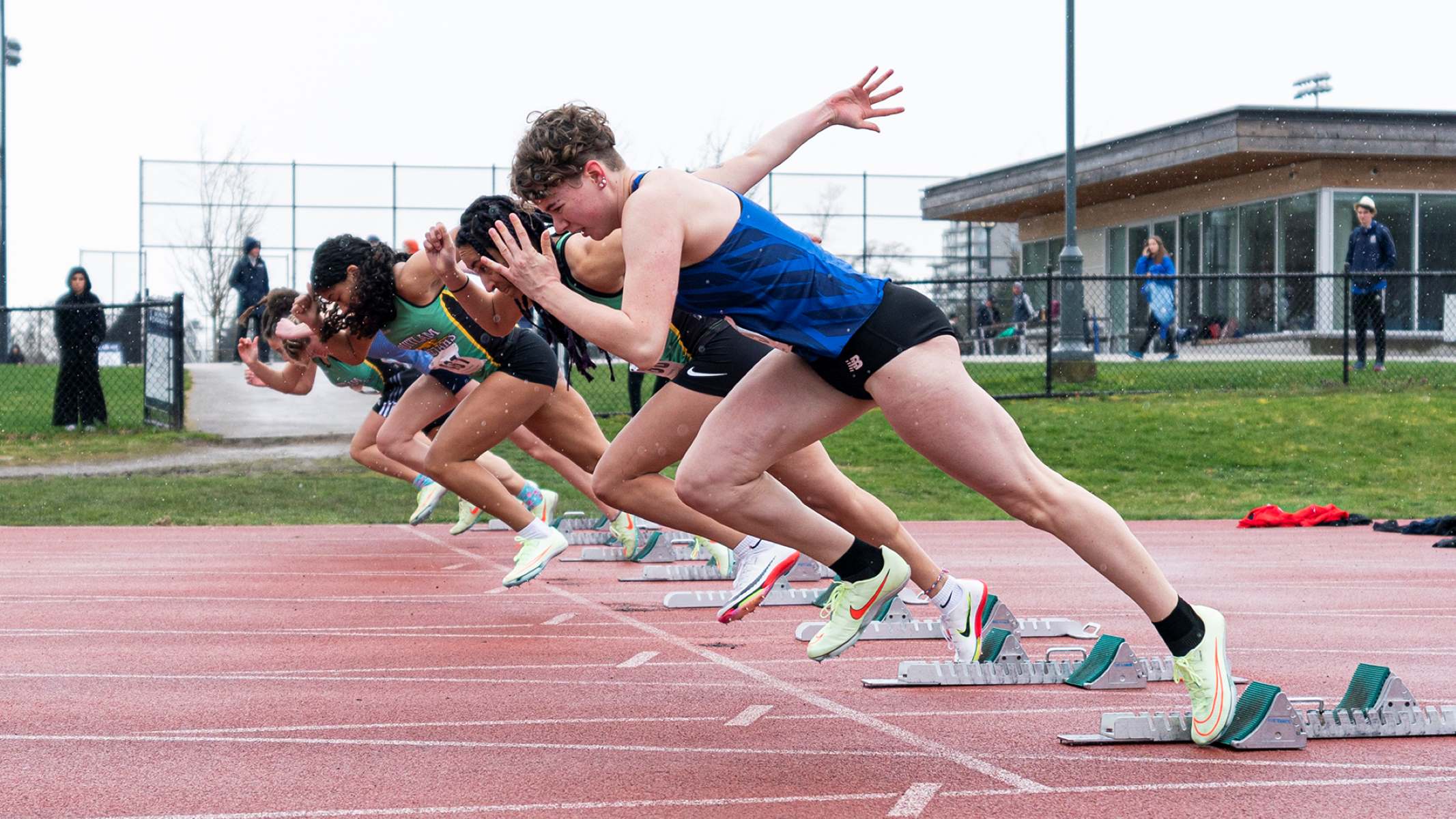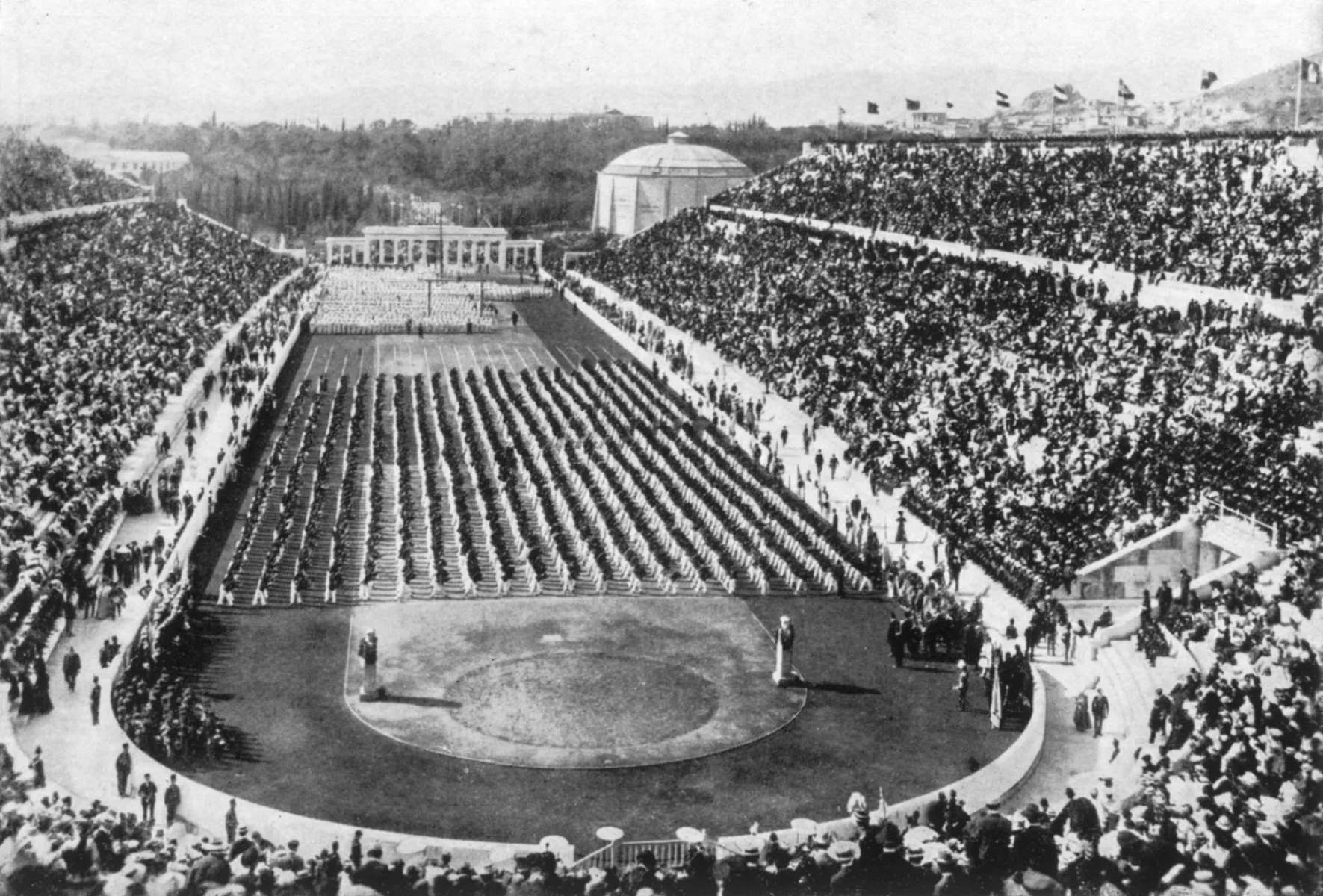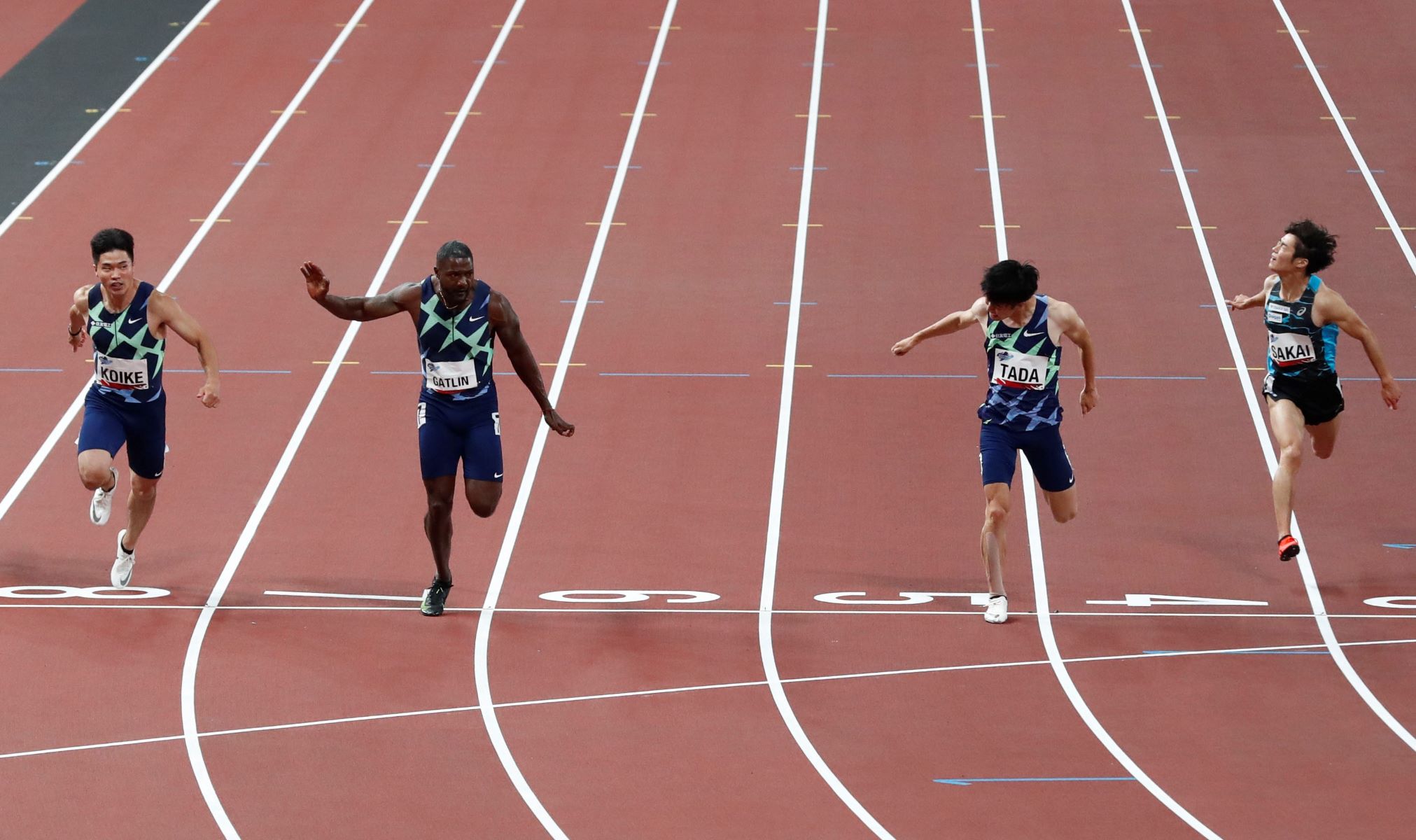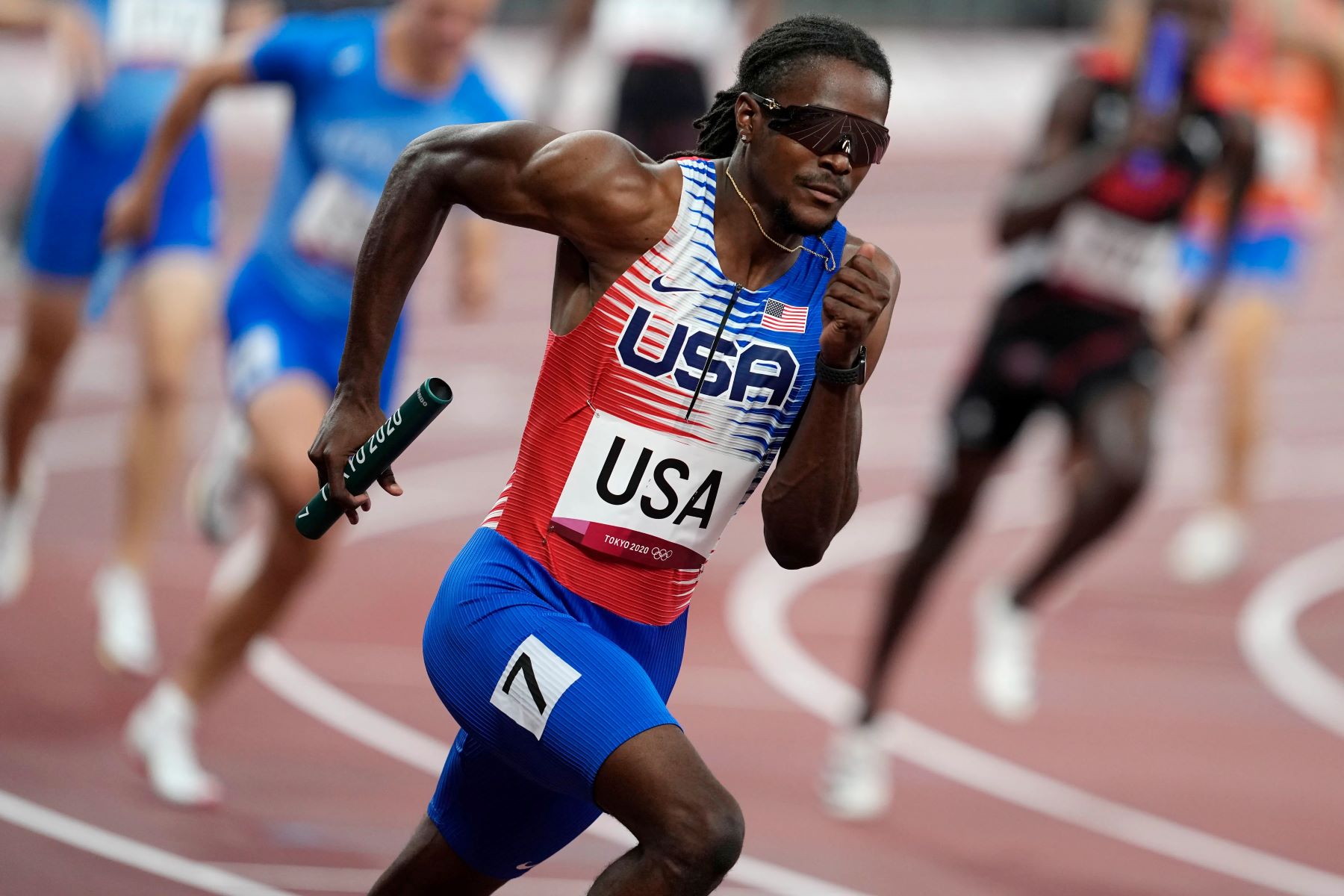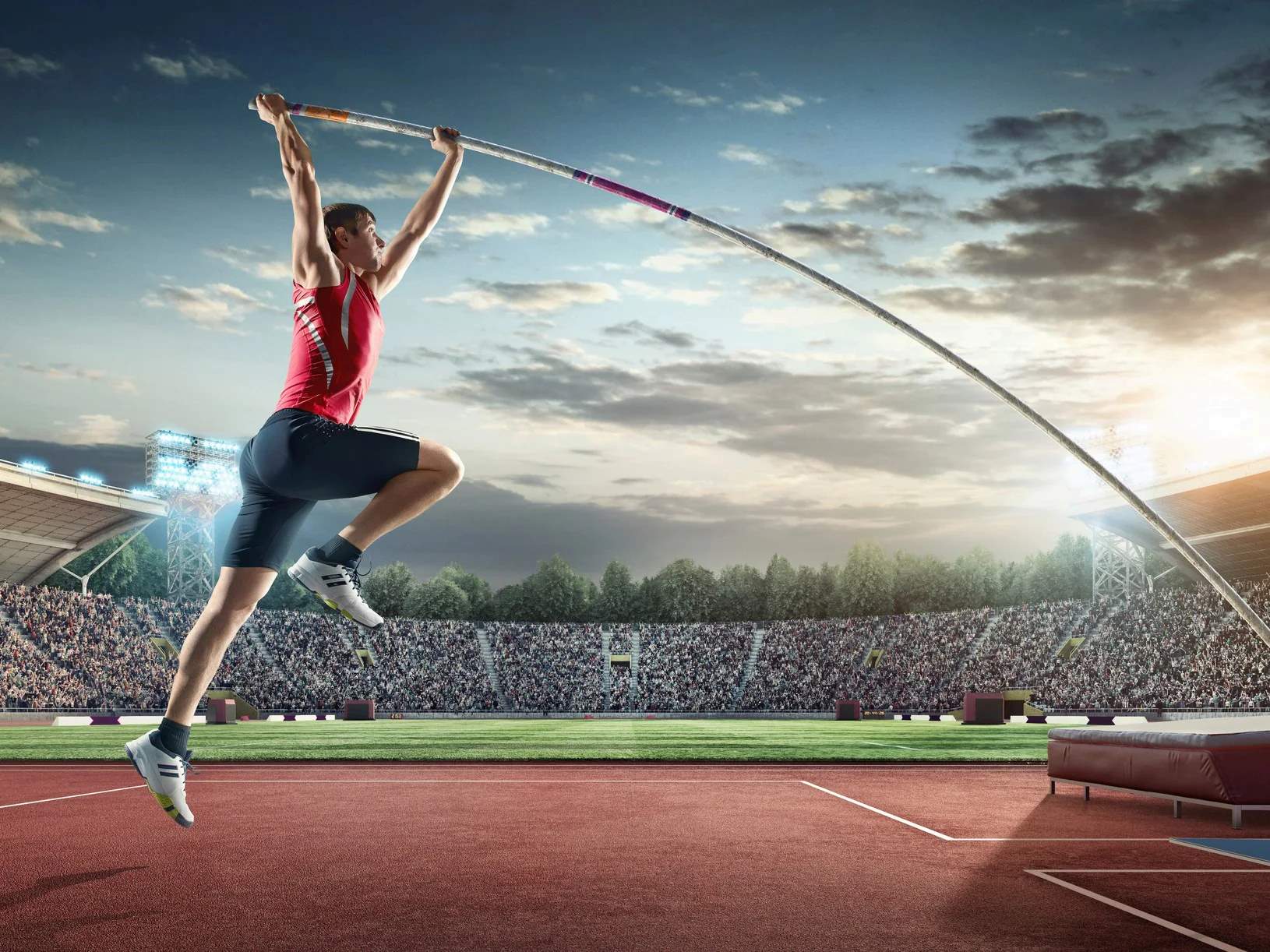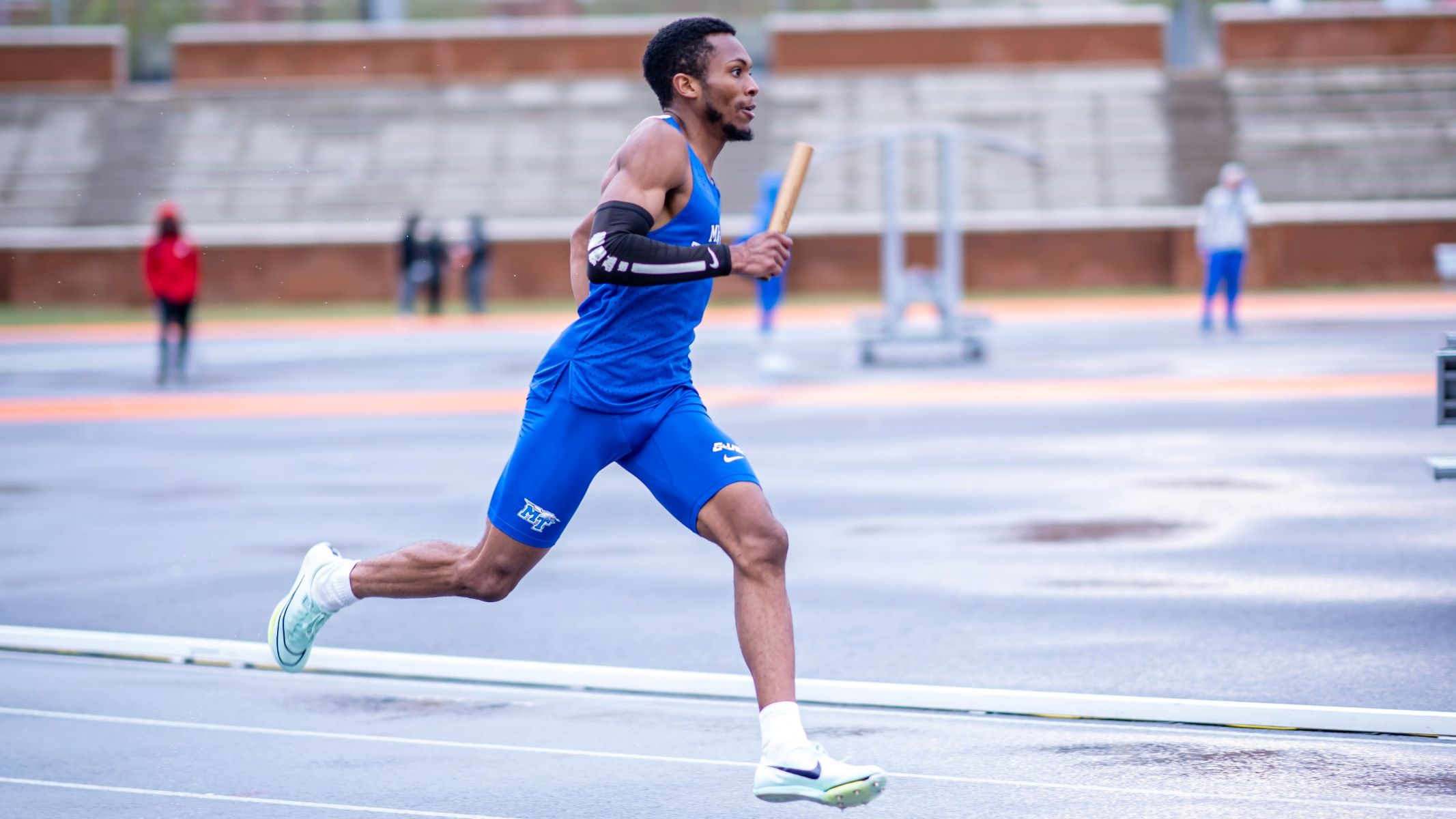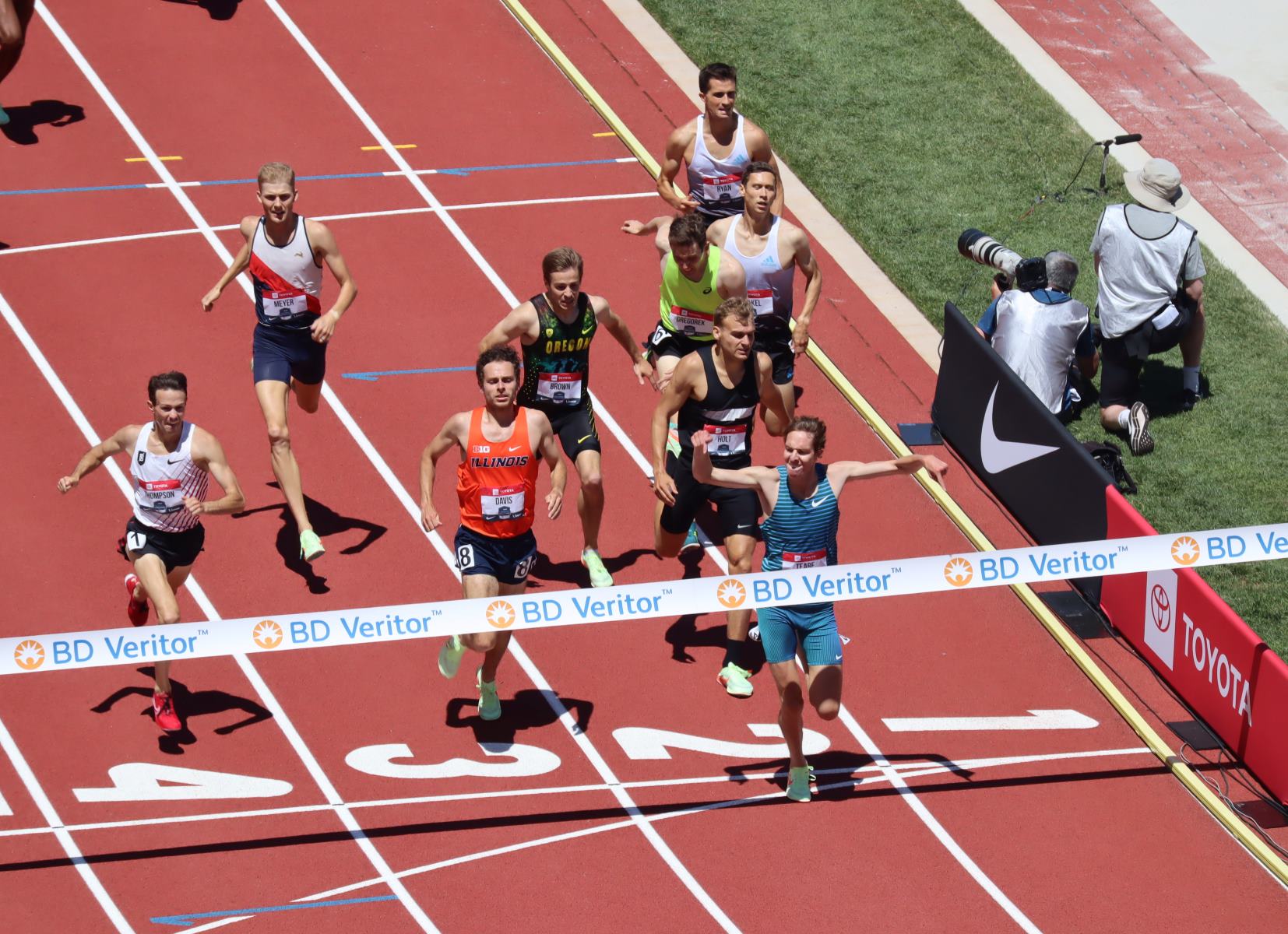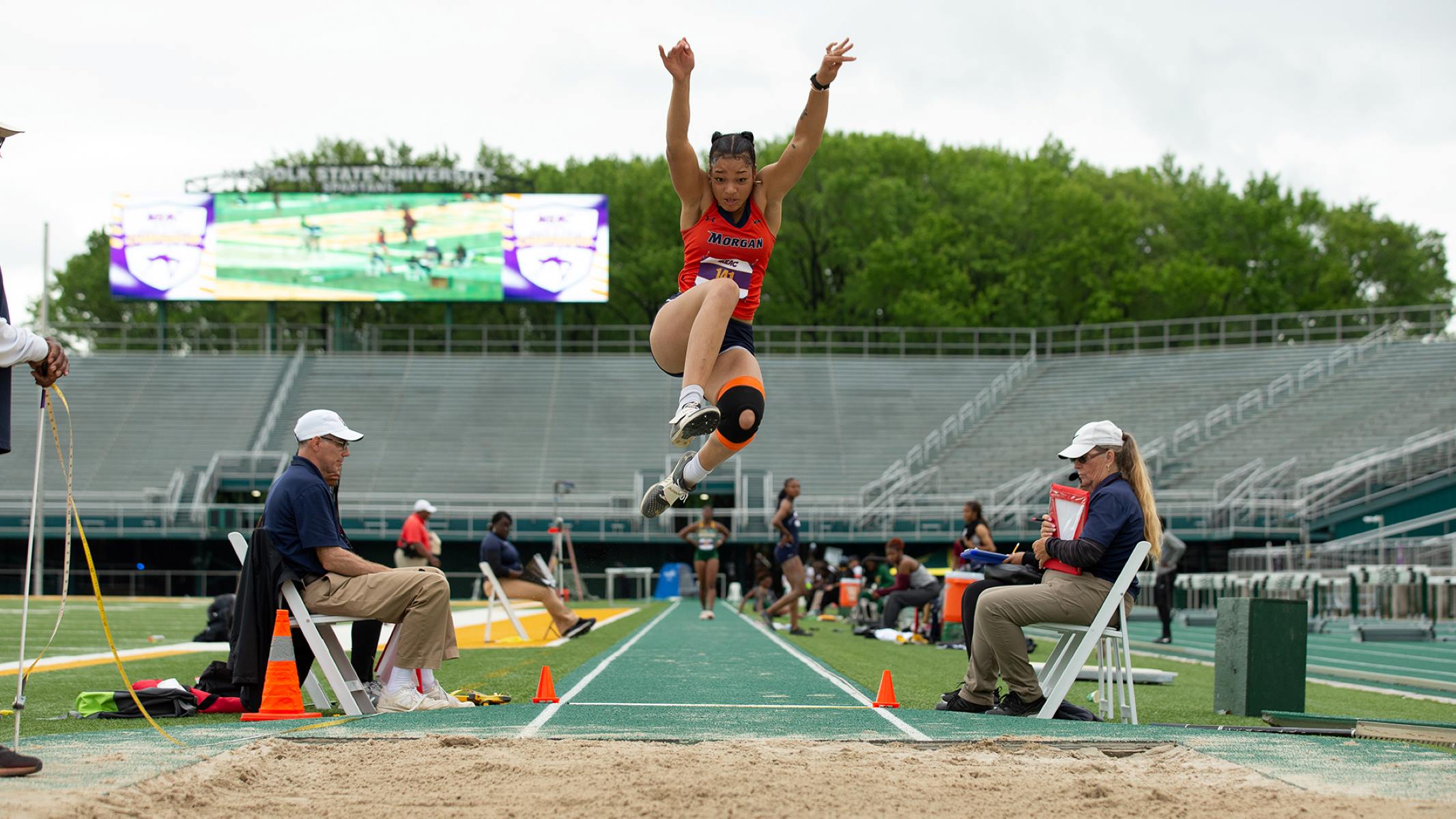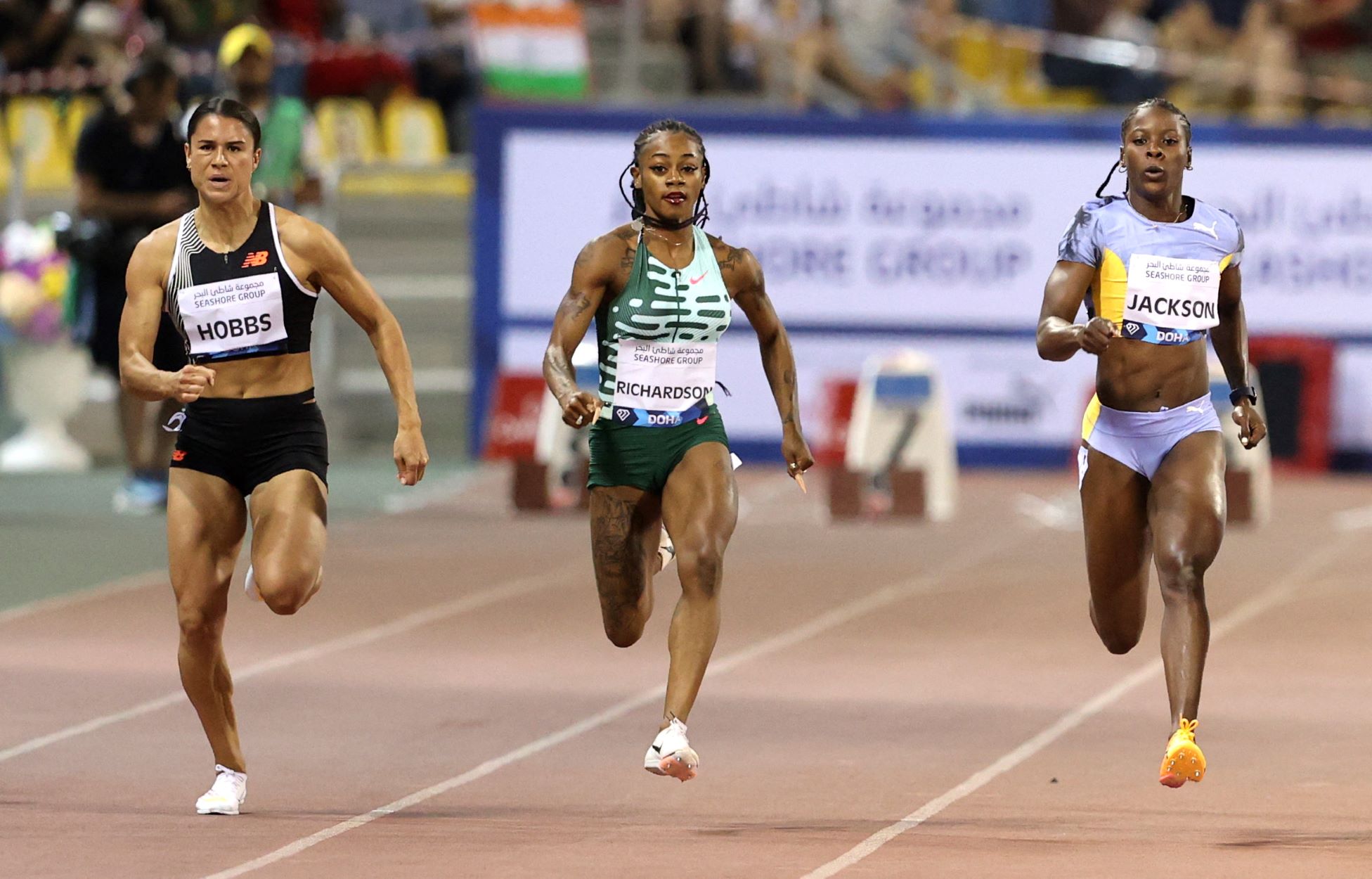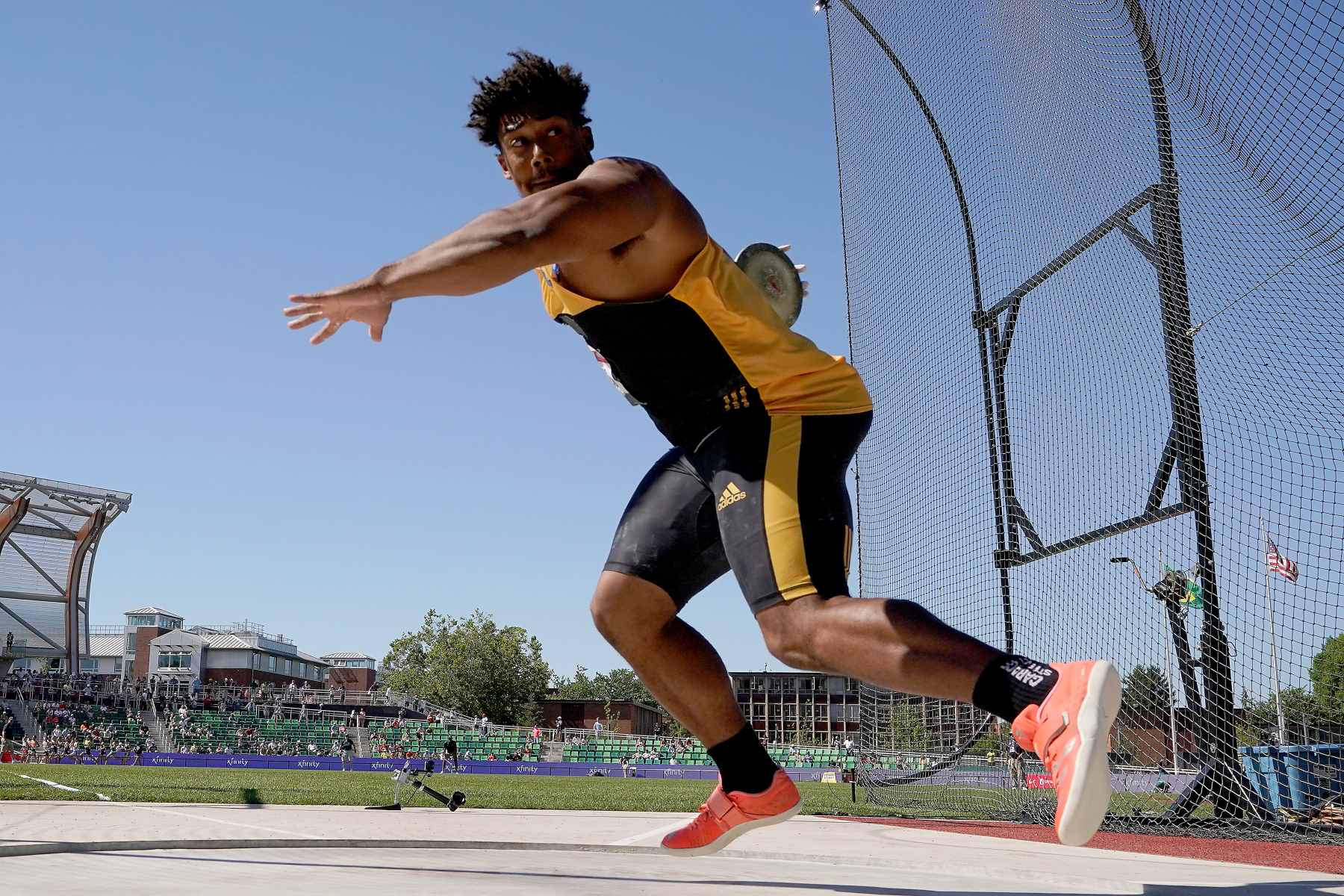

Featured
What Is A Discus In Track And Field
Published: September 5, 2023
Discover the importance of the discus in track and field with our featured article. Learn the techniques and training needed for success in this challenging event.
Introduction
Track and field is a sport that combines various athletic disciplines, showcasing the human body’s capabilities in running, jumping, and throwing events. One such event is the discus throw, which has its origins dating back to ancient Greece. The discus throw is a captivating spectacle, requiring a unique blend of strength, technique, and precision.
The discus is a circular object made of metal, typically weighing between 1 to 2 kilograms for men and 1 to 1.5 kilograms for women. The objective of the event is to throw the discus as far as possible within a designated throwing sector. While it may seem straightforward, the discus throw requires a deep understanding of the technique, along with extensive training and practice.
Over the years, the discus throw has evolved, with athletes continually pushing their limits and setting new records. This article will delve into the history, equipment, techniques, training methods, and benefits associated with discus throwing. Whether you are a passionate track and field athlete, a curious spectator, or someone looking to try out a new sport, this article will provide you with a comprehensive understanding of the captivating world of discus in track and field.
Definition of a Discus
The discus used in track and field is a round, flat object made of metal, typically made of steel or a mixture of metal alloys. Its shape resembles that of a flying saucer, with a diameter of around 8 to 9 inches for men and 7 to 8 inches for women. The thickness of the discus varies, with the rim being slightly thicker than the center.
The weight of the discus differs for men and women. Men typically throw a discus weighing between 1 to 2 kilograms (2.2 to 4.4 pounds), while women throw a slightly lighter discus weighing between 1 to 1.5 kilograms (2.2 to 3.3 pounds). The weight of the discus affects how far it can be thrown and requires different levels of strength and technique for optimal performance.
The discus has two main parts: the rim and the body. The rim, which is the outer edge of the discus, provides stability and assists in maintaining proper flight. The body, on the other hand, is the central portion of the discus where the thrower holds and releases it. The body is also where the throwing technique plays a crucial role.
Discuses used in competitions are usually color-coded to help athletes distinguish between their throws. They often come in colors such as yellow, green, or red. The contrast in color assists in tracking the discus in flight and provides a visual cue for the athletes to assess the trajectory and adjust their technique accordingly.
Overall, a discus in track and field is a specialized throwing object that requires a combination of strength, technique, and precision. It’s this unique combination that makes the discus throw one of the most exciting and challenging events in the world of athletics.
History of Discus in Track and Field
The discus throw has a rich and ancient history that dates back to the ancient Olympics in Greece. It was introduced as an event in the ancient pentathlon, a five-event competition that included running, jumping, wrestling, and throwing disciplines. The ancient Greeks believed that the discus throw symbolized the power and strength of the gods.
During the ancient Olympics, the discus used was made of stone or bronze and had a smaller diameter and weight compared to the modern discus. Athletes would often have to run and throw the discus while maintaining their balance and controlling their momentum, making it a challenging and physically demanding event.
As time progressed, the discus throw continued to evolve. In the early 20th century, metal discuses with a larger diameter and weight were introduced, allowing athletes to achieve greater distances in their throws. The discus used in modern track and field competitions is standardized and regulated by international governing bodies to ensure fairness and uniformity.
Throughout history, several notable athletes have left their mark on the sport of discus throwing. One such athlete is Al Oerter, an American who won gold medals in four consecutive Olympic Games from 1956 to 1968. Oerter’s incredible achievements in discus throwing solidified his status as one of the greatest athletes in track and field history.
Today, the discus throw continues to captivate audiences worldwide. It is a staple event in track and field competitions, including the Olympic Games, World Championships, and various national and international meets. The sport has attracted athletes from all backgrounds, showcasing their strength, technique, and dedication to achieve impressive distances in their throws.
As the history of the discus throw continues to unfold, it serves as a testament to the rich heritage and enduring legacy of track and field. The event has evolved from humble beginnings in ancient Greece to a highly technical and thrilling discipline that pushes the boundaries of human athleticism.
Discus Equipment and Specifications
The discus throw requires specific equipment and adheres to certain specifications to ensure fair competition and safety for all athletes involved. Here are the key elements of discus equipment and their specifications:
1. Discus: The discus itself is the primary piece of equipment used in the event. As mentioned earlier, it is a round, flat object made of metal, typically steel or metal alloys. Its diameter ranges from 8 to 9 inches for men and 7 to 8 inches for women. The weight of the discus varies, with men using a discus weighing between 1 to 2 kilograms (2.2 to 4.4 pounds) and women using a discus weighing between 1 to 1.5 kilograms (2.2 to 3.3 pounds).
2. Throwing Circle: The throwing circle is a marked area from which the athlete must initiate their throw. It is a ring-shaped area with a diameter of 2.5 meters (8.2 feet) for both men and women. The circumference of the ring is marked with a rim that serves as a boundary within which the thrower must remain during the throw.
3. Toe Board: The toe board is a straight line extending from the front of the throwing circle and serves as a starting point for the athlete’s throw. The athlete’s foot must be in contact with or behind the toe board at the moment of release. Crossing the toe board results in a foul throw.
4. Sector Lines: The throwing sector is a pie-shaped area that extends from the throwing circle. It provides a designated space within which the discus must land to be considered a valid throw. The sector lines are marked with lines extending from the center of the throwing circle, dividing the sector into equal segments.
5. Officials: The discus throw event also requires trained officials who oversee the competition and enforce the rules and regulations. They ensure that the athletes adhere to the specifications, mark the distances of the throws, and judge the validity of each attempt.
These equipment and specifications ensure a fair and standardized playing field for all athletes participating in discus throwing events. The specific details and regulations may vary slightly depending on the level of competition and governing bodies, but the fundamental elements remain consistent.
Discus Technique and Rules
The discus throw requires a combination of strength, technique, and precision. Here’s an overview of the technique and rules involved in discus throwing:
1. Grip: The thrower holds the discus with all fingers and places it against the palm of the hand. The most common grip technique is the “finger grip,” where the discus rests between the thumb and the fingers. The hand is slightly tilted to create a slanted surface for better aerodynamics during the throw.
2. Starting Position: The thrower stands at the back of the throwing circle with their back facing the direction of the throw. They begin with a wind-up, swinging their arm backward while simultaneously rotating their body to build momentum.
3. Pivot: As the thrower completes the rotation, they pivot on the ball of their back foot, transferring their weight from the back foot to the front foot. This movement generates rotational force and leads to the release of the discus.
4. Release: The thrower releases the discus from the hand with a snapping motion. The release point is crucial, and timing it correctly contributes to the distance and accuracy of the throw. The goal is to release the discus at the highest point of the throw, maximizing its trajectory and potential distance.
5. Fouls: To ensure fair competition, certain rules and regulations govern discus throws. Fouls occur when the thrower steps out of the throwing circle, crosses the toe board, or fails to release the discus before exiting the throwing sector. Fouls result in a throw being disqualified and no distance being recorded.
6. Measurement: The distance of a throw is measured from the inside edge of the throwing circle to the first contact point where the discus lands within the throwing sector. Officials use measuring tapes to determine the distance accurately. The furthest valid throw is recorded as the thrower’s result.
7. Number of Attempts: In competitions, athletes typically have a set number of attempts to achieve their best distance. The exact number of attempts varies depending on the level of competition and the event rules.
It is important for athletes to familiarize themselves with the specific rules and regulations imposed by the governing body of the event they are participating in. Adhering to these rules not only ensures fairness but also provides a structured environment for athletes to showcase their skills and compete at their best.
Training for Discus Throwing
Discus throwing requires a combination of strength, technique, and explosive power. Training for this event involves a comprehensive approach that focuses on developing the necessary physical attributes and refining the technique. Here are some key aspects of training for discus throwing:
1. Strength Training: Building overall strength is essential for generating power and stability during the throw. Weightlifting exercises such as squats, deadlifts, and bench presses help develop the lower body, core, and upper body strength required for an effective throw. Specific exercises targeting the shoulders, back, and core muscles are also important.
2. Technique Work: Mastering the technique of the discus throw is crucial for achieving optimal results. Athletes work closely with coaches to refine their grip, stance, wind-up, and release techniques. Regular practice allows for fine-tuning and consistent execution of the movement patterns involved in the throw.
3. Plyometric Training: Incorporating plyometric exercises helps improve explosive power and speed, which are vital for generating maximum force during the throw. Box jumps, medicine ball throws, and explosive push-ups are examples of plyometric exercises that can benefit discus throwers.
4. Core Stability: A strong and stable core is essential for transferring power from the lower body to the upper body and maintaining balance throughout the throw. Core exercises such as planks, Russian twists, and medicine ball rotations are beneficial for developing core strength and stability.
5. Mobility and Flexibility: Good mobility and flexibility are necessary for achieving a full range of motion during the throw. Regular stretching and mobility exercises targeting the shoulders, hips, and thoracic spine can improve the ability to execute the correct throwing positions and reduce the risk of injury.
6. Functional Training: Supplementing the training program with functional exercises that mimic throwing movements can help reinforce the muscle patterns and coordination used in the throw. Using resistance bands, cable machines, or specific throwing drills can enhance the transfer of training to the actual throw.
7. Mental Preparation: Competitive discus throwing requires mental focus, concentration, and the ability to perform under pressure. Athletes can incorporate visualization techniques, mental imagery, and meditation into their training routine to enhance focus, confidence, and mental toughness.
It is important to note that training programs should be tailored to individual needs, taking into consideration an athlete’s current physical abilities, experience level, and goals. Working with a qualified coach or trainer who has expertise in discus throwing can greatly enhance an athlete’s progress and ensure the use of proper techniques and training methods.
Common Mistakes in Discus Throwing
Discus throwing is a technically demanding sport that requires precise movements and coordination. Athletes, especially beginners, may encounter common mistakes that hinder their performance. Understanding and addressing these mistakes can lead to improvements in technique and overall results. Here are some common mistakes in discus throwing:
1. Grip Issues: Incorrect hand placement on the discus can significantly affect the throw. Gripping the discus too tightly can restrict the release and reduce distance, while holding it too loosely reduces control. Finding the right grip and maintaining consistency is crucial for a successful throw.
2. Lack of Balance: Maintaining balance throughout the throw is essential for generating power and accuracy. Beginners often struggle with maintaining proper balance during the rotational movement. Failure to distribute weight evenly or overcompensating on one side can detract from the throw’s effectiveness.
3. Inadequate Footwork: Proper footwork is essential in generating power and optimizing the transfer of force. Mistakes such as incorrect positioning of the feet, improper weight distribution, or failure to pivot effectively can result in suboptimal performance and reduced distance.
4. Insufficient Use of Legs: The lower body plays a critical role in generating power and drive in the throw. Neglecting to engage the legs fully can lead to relying solely on arm strength, resulting in a weaker and shorter throw. Learning to utilize the legs as a source of power is crucial for achieving maximum distance.
5. Overuse of the Arm: Reliance on the arm alone without utilizing the entire body’s kinetic chain is a common mistake among beginners. Instead, the throw should initiate from the legs and core, with the arm acting as a conduit for transferring power from the body to the discus.
6. Inadequate Release Point Timing: Timing the release of the discus at the optimal point in the throw is critical for achieving distance. Releasing too early or too late can lead to a loss of power or improper trajectory. Finding the right timing through practice and coordination is essential for maximizing throw performance.
7. Lack of Consistency: Consistency in technique is key to achieving consistent results. Inconsistent throws may occur due to variations in grip, footwork, release, or overall body positioning. Developing a disciplined and repeatable technique through regular practice and corrections helps in achieving consistent performance.
Identifying these common mistakes and working to correct them can significantly improve an athlete’s discus throwing performance. Seeking guidance from coaches, analyzing video recordings, and dedicating time to focused practice can help address these mistakes and further develop technique, leading to greater success in the sport.
Mental and Physical Benefits of Discus Throwing
Discus throwing not only provides a challenging and exciting athletic experience but also offers numerous mental and physical benefits. Engaging in this sport can have a positive impact on both the mind and the body. Here are some of the mental and physical benefits of discus throwing:
Physical Strength and Power: Discus throwing is a dynamic and explosive sport that requires participants to utilize various muscle groups in the body. Regular training develops strength, power, and muscular endurance in the legs, arms, shoulders, and core. The explosive movements involved in the throw result in improved overall physical fitness.
Improved Coordination and Balance: Discus throwing involves a complex interplay of movements where athletes need to coordinate their grip, stance, footwork, and release. Practicing these movements enhances hand-eye coordination, body control, and balance. The ability to maintain balance and coordination during high-speed rotations carries over to other sports and daily activities.
Mental Focus and Concentration: Discus throwing requires intense mental focus and concentration. Athletes must be fully present and focused on executing the throw with precision. Mastering the technique and maintaining concentration amidst distractions fosters mental discipline and enhances the ability to concentrate in other areas of life.
Goal Setting and Perseverance: Discus throwing is a goal-oriented sport where athletes continuously strive to improve their personal best distances. This encourages the development of goal-setting skills, perseverance, and the ability to overcome challenges. Athletes learn to set achievable targets, break them down into smaller milestones, and work towards consistent progress over time.
Stress Relief and Enhanced Mood: Engaging in physical activities like discus throwing releases endorphins, which are natural mood boosters that promote a sense of well-being and reduce stress. The physical exertion and focus involved in the sport can help alleviate anxiety, improve mood, and provide a healthy outlet for managing daily stressors.
Building Confidence and Self-Esteem: As athletes improve their throwing skill and achieve their goals, their confidence and self-esteem naturally grow. The sense of accomplishment from consistent progress and personal records boosts confidence levels both within the sport and in other aspects of life.
Team and Social Interaction: Discus throwing can be practiced individually or as part of a team. Being part of a team fosters camaraderie, promotes social interaction, and creates a support system. Athletes can exchange knowledge, motivate each other, and share experiences, fostering a sense of belonging and friendship.
Discus throwing offers a wide range of mental and physical benefits that contribute to overall well-being. Whether pursuing it as a competitive sport or as a recreational activity, individuals participating in discus throwing can enjoy improved physical fitness, mental discipline, and a sense of accomplishment that extends beyond the throwing circle.
Discus Throwing Records and Achievements
Discus throwing has seen remarkable feats and outstanding achievements throughout its history. Athletes from around the world have set records and made their mark in this captivating sport. Here are some noteworthy discus throwing records and achievements:
Men’s World Record: The current men’s world record in discus throwing is held by Jürgen Schult of Germany, set on June 6, 1986. Schult achieved an impressive throw of 74.08 meters (243 feet 1 inch) during a competition in Neubrandenburg, Germany. His record-breaking throw remains unbeaten for over three decades.
Women’s World Record: The women’s world record in discus throwing is held by Gabriele Reinsch, also from Germany. Reinsch set the record on July 9, 1988, with a remarkable throw of 76.80 meters (252 feet 0 inches) during a competition in Neubrandenburg. Her record still stands as the longest throw by a woman in history.
Olympic Records: The Olympic Games serve as a platform for athletes to showcase their discus throwing prowess. The current men’s Olympic record is held by Virgilijus Alekna from Lithuania, with a throw of 69.89 meters (229 feet 3 inches) achieved in the 2004 Athens Olympics. The women’s Olympic record is held by Martina Hellmann from East Germany, who threw an impressive 72.30 meters (237 feet 2 inches) in the 1988 Seoul Olympics.
Championship Performances: Discus throwing has witnessed exceptional performances during various world championships and major international meets. Notable athletes such as Gerd Kanter, Robert Harting, Sandra Perković, and Valerie Adams have consistently dominated the sport with their impressive throws and multi-year reigns as world champions.
National Records: Each country has its own national records in discus throwing, showcasing the talent and achievements of their athletes. These national records contribute to the vibrant and competitive spirit within the sport, fostering healthy rivalries and pushing athletes to new heights.
Athlete Milestones: Throughout the history of discus throwing, several athletes have achieved notable milestones. Al Oerter, the legendary American thrower, won four consecutive Olympic gold medals in discus throwing from 1956 to 1968, making him one of the most iconic figures in the sport’s history. Other athletes have achieved personal bests, breakthrough performances, and international recognition for their remarkable achievements in discus throwing.
These records and achievements highlight the incredible talent and dedication of discus throwers. As athletes continue to push the boundaries of human potential, these milestones inspire future generations to strive for greatness and leave their own mark in the world of discus throwing.
Conclusion
Discus throwing is a captivating event that requires a unique combination of strength, technique, and precision. From its ancient origins in Greece to its modern-day prominence in track and field competitions, the discus throw has evolved and continues to captivate athletes and spectators around the world.
Throughout this article, we have explored the definition of a discus, delved into its history, discussed the equipment and specifications, examined the technique and rules, and explored the training methods and benefits associated with discus throwing. We have also highlighted common mistakes, discussed notable records and achievements, and emphasized the mental and physical advantages of participating in this sport.
Discus throwing offers athletes incredible physical benefits such as increased strength, power, coordination, and agility. Engaging in this sport also fosters mental discipline, concentration, goal setting, and perseverance. Furthermore, the sense of accomplishment and the satisfaction of setting personal records and achieving milestones contribute to building confidence and self-esteem.
As the sport of discus throwing continues to thrive, new athletes will challenge the records, develop innovative techniques, and inspire future generations. It is a sport that combines athleticism, strategy, and a deep understanding of the mechanics involved. Whether you are a participant, spectator, or simply an enthusiast, discus throwing offers an exciting and dynamic experience that celebrates the human body’s capabilities.
So, whether you’re fascinated by its ancient history or drawn to its modern-day allure, the world of discus throwing invites you to immerse yourself in an athletic endeavor that encompasses physical prowess, mental resilience, and the pursuit of excellence.
